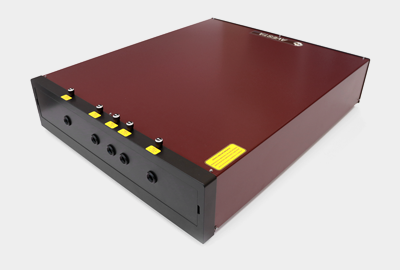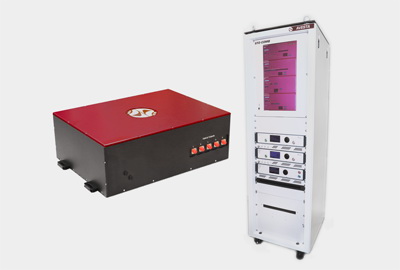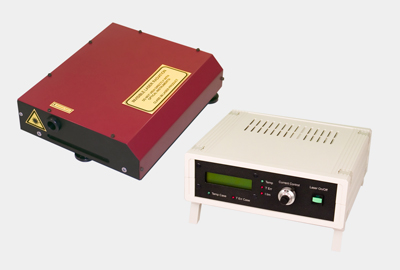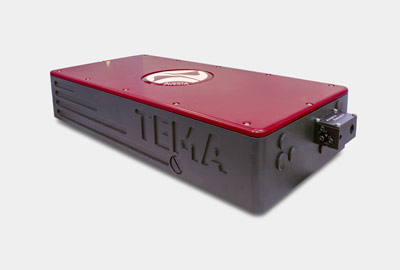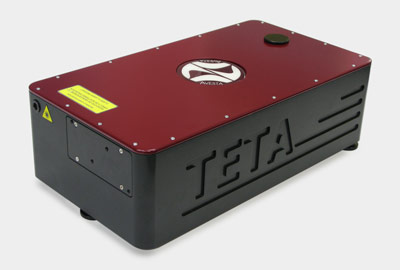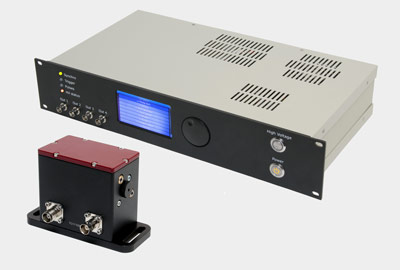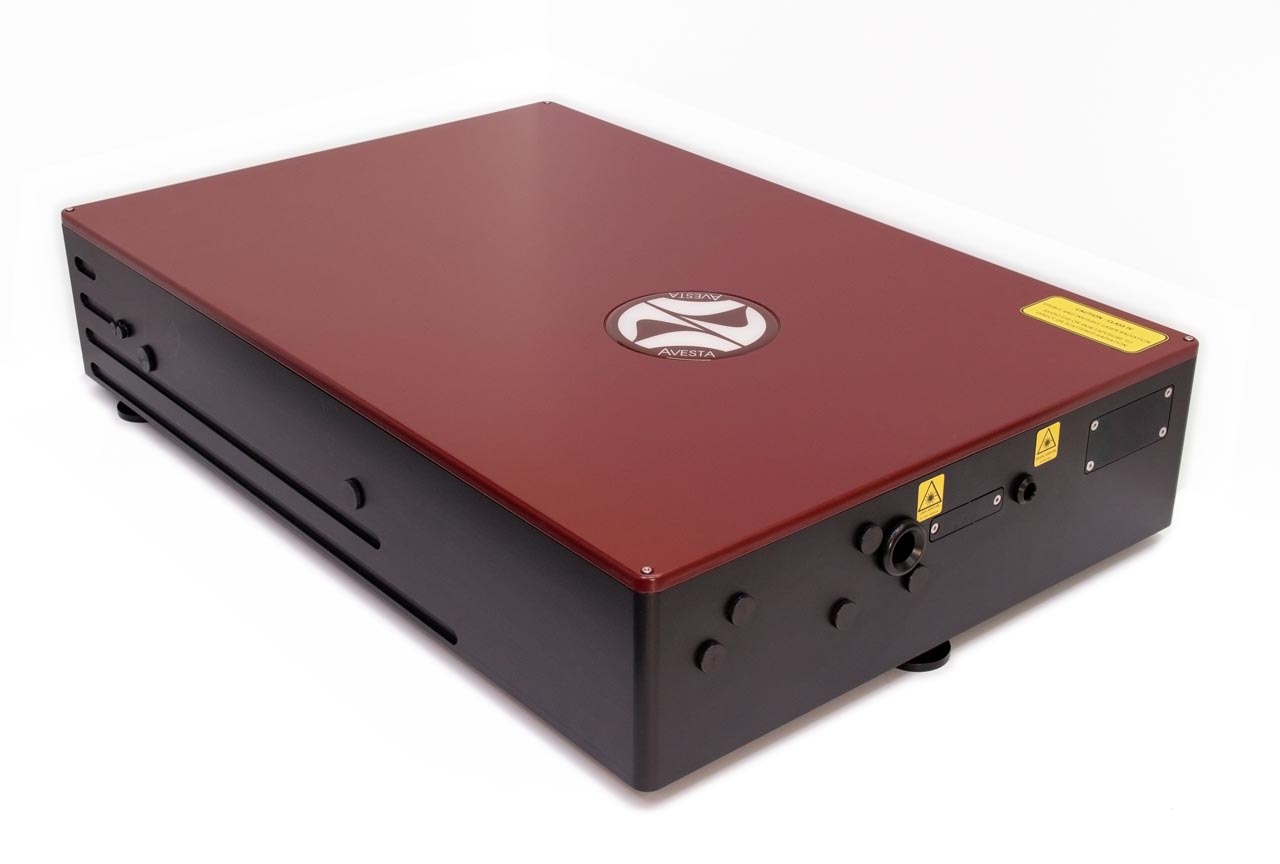N.V. Didenko, A. V. Konyashchenko, D. A. Konyashchenko, P. V. Kostryukov, I. I. Kuritsyn, A. P. Lutsenko, A. O. Mavritskiy
A laser system utilising the method of synchronous pumping of a Ti : sapphire laser by a high-power femtosecond Yb3+-doped laser is described. The pulse repetition rate of the Ti : sapphire laser is successfully locked to the repetition rate of the Yb laser for more than 6 hours without the use of any additional electronics. The measured timing jitter is shown to be less than 1 fs. A simple qualitative model addressing the synchronisation mechanism utilising the cross-phase modulation of oscillation and pump pulses within a Ti : sapphire active medium is proposed. Output parameters of the Ti : sapphire laser as functions of its cavity length are discussed in terms of this model.
A laser system utilising the method of synchronous pumping of a Ti : sapphire laser by a high-power femtosecond Yb3+-doped laser is described. The pulse repetition rate of the Ti : sapphire laser is successfully locked to the repetition rate of the Yb laser for more than 6 hours without the use of any additional electronics. The measured timing jitter is shown to be less than 1 fs. A simple qualitative model addressing the synchronisation mechanism utilising the cross-phase modulation of oscillation and pump pulses within a Ti : sapphire active medium is proposed. Output parameters of the Ti : sapphire laser as functions of its cavity length are discussed in terms of this model.
Keywords: synchronous pumping, femtosecond pumping, Ti:sapphire laser, cross-phase modulation.
M. A. Gubin, A. N. Kireev, A. V. Tausenev, A. V. Konyashchenko, P. G. Kryukov, D. A. Tyurikov, A. S. Shelkovikov
The main elements needed for the realization of a compact femtosecond methane optical clock are developed and studied. A femtosecond laser system on an Er3+ fiber (λ = 1.55 μm) contains an oscillator, an amplifier, and a fiber with a relatively high nonlinearity in which the supercontinuum radiation is generated in the range 1–2 μm. In the supercontinuum spectrum, the fragments separated by an interval that is close to the methane-optical reference frequency (λ = 3.39 μm) exhibit an increase in intensity. The supercontinuum radiation is converted into the difference frequency in a nonlinear crystal to the range of the methane-reference frequency (λ = 3.3–3.5 μm), so that the frequency components of the transformed spectrum have sufficient intensities for the subsequent frequency-phase stabilization with respect to the methane reference. A system that stabilizes the pulse repetition rate of the femtosecond Er3+laser is also employed. Thus, the repetition rate of the ultrashort pulses of the femtosecond fiber laser is locked to the methane reference. The pulse repetition rate is compared with the standard second. Thus, the scheme of an optical clock is realized.
Anton V. Tausenev, P. G. Kryukov, M. M. Bubnov, M. E. Likhachev, E. Yu. Romanova, M. V. Yashkov, V. F. Khopin and M. Yu. Salganskii
A femtosecond Er3+-doped fibre laser system is developed and studied. The system contains a master oscillator operating in the pulse stretching regime, an amplifier of chirped pulses, and a device for pulse compression. The laser emits 1.55-μm, 100-fs, 90-mW pulses with a pulse repetition rate of 25 MHz. The setup was used for supercontinuum generation in an optical fibre heavily doped with GeO2. The width of the generated supercontinuum was close to an octave.
Anton V. Tausenev, Elena D. Obraztsova, A. S. Lobach, A. I. Chernov, Vitalii I. Konov, Aleksandr V. Konyashchenko, P. G. Kryukov and Evgenii M Dianov
We studied the ring and linear schemes of erbium-doped fibre lasers in which passive mode locking was achieved with the help of saturable absorbers made of high-optical quality films based on cellulose derivatives with dispersed single-wall carbon nanotubes. The films were prepared by the original method with the use of nanotubes synthesised by the arc discharge method. The films exhibit nonlinear absorption at a wavelength of 1.5 μm. Pulses in the form of optical solitons of duration 1.17 ps at a avelength of 1.56 μm were generated in the ring scheme of the erbium laser. The average output power was 1.1 mW at a pulse repetition rate of 20.5 MHz upon pumping by the 980-nm, 25-mW radiation from a laser diode. The pulse duration in the linear scheme was reduced to 466 fs for the output power up to 4 mW and a pulse repetition rate of 28.5 MHz. The specific feature of these lasers is a low pump threshold in the regime of generation of ultrashort pulses.
N. V. Minaev, M. A. Tarkhov, D. S. Dudova, P. S. Timashev, B. N. Chichkov and V. N. Bagratashvili
This paper describes a new approach to the fabrication of superconducting nanowire single-photon detectors from ultrathin NbN films on SiO2 substrates. The technology is based on nonlinear femtosecond optical lithography and includes direct formation of the sensitive element of the detector (the meander) through femtosecond laser exposure of the polymethyl methacrylate resist at a wavelength of 525 nm and subsequent removal of NbN using plasma-chemical etching. The nonlinear femtosecond optical lithography method allows the formation of planar structures with a spatial resolution of ~50 nm. These structures were used to fabricate single-photon superconducting detectors with quantum efficiency no worse than 8% at a wavelength of 1310 nm and dark count rate of 10 s−1 at liquid helium temperature.
Keywords: optical lithography, nanostructures, single-photon detector, femtosecond
lithography
B.S. Shavkuta, M.Y. Gerasimov, N.V. Minaev, D.S. Kuznetsova, V.V. Dudenkova, I.A. Mushkova, B.E. Malyugin, S.L. Kotova, P.S. Timashev, S.V. Kostenev
A two-photon laser femtosecond crosslinking process at the wavelength of 525 nm was studied in a human donor cornea in the presence of riboflavin using two-photon optical microscopy and nanoindentation. It was shown that such an approach results in efficient crosslinking of the corneal collagen and a significant (three-fold) increase in the Young's modulus of the corneal structure. Application of a femtosecond laser with the wavelength of 525 nm allows a drastic enhancement of efficiency in the presence of riboflavin on human corneas and a 50-fold reduction of the laser treatment duration in comparison with the use of a femtosecond laser with the wavelength of 760 nm. We relate this effect to a significant growth in the coefficient of two-photon absorption due to the laser wavelength falling within the edge of the photoinitiator (riboflavin) absorption band. Our studies on a donor human cornea demonstrate the good potential for the clinical application of a femtosecond laser with the wavelength of 525 nm for increasing the cornea rigidity using the two-photon laser femtosecond crosslinking technique.
Keywords: 525 nm femtosecond laser, human cornea, two-photon collagen crosslinking,
keratoconus, riboflavin, micromechanical properties



